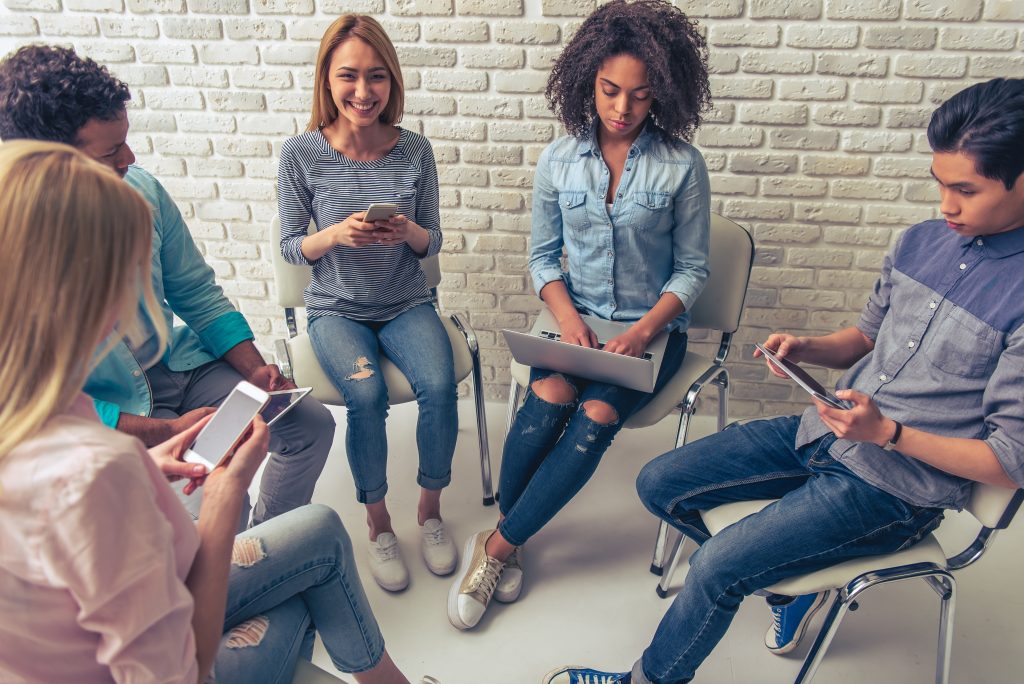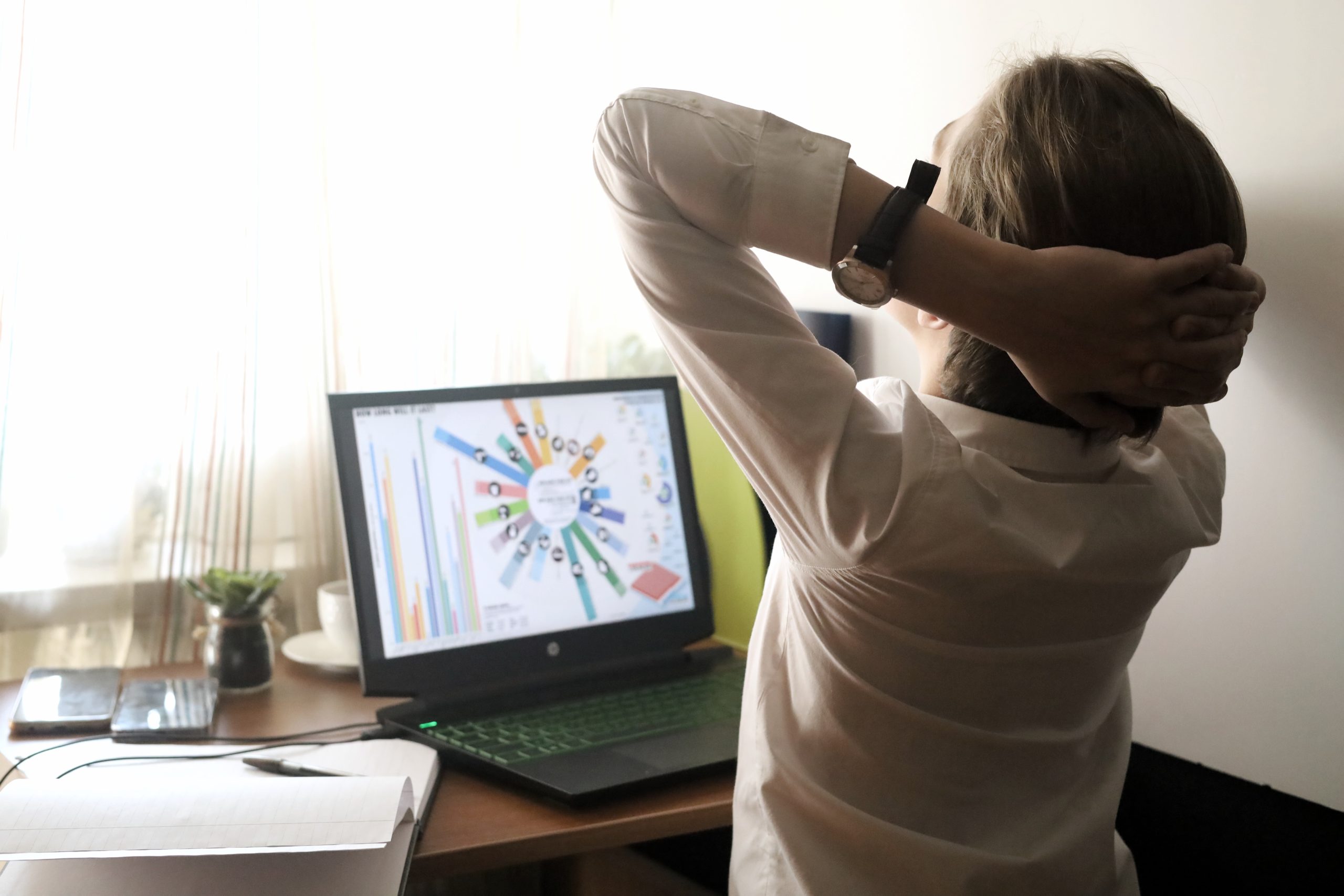Digital Detox: Managing Screen Time for Better Wellbeing
It’s a familiar scene: You pick up your phone to check the time, and suddenly it’s 30 minutes later. You’ve fallen down a rabbit hole of notifications, news updates, and social media scrolling. Meanwhile, the cup of tea you made sits cold beside you, and that moment of quiet you’d planned has evaporated.
In today’s hyperconnected world, our relationship with screens has become increasingly complex. The average Australian spends over 5.5 hours on their phone daily according to Digital 2023: Australia report, with additional hours on computers and televisions. While technology brings remarkable benefits, many of us are feeling the effects of digital overload on our general sense of wellbeing.
At Nuvola Health, we believe that balance is key to wellness in all its forms. Understanding and managing your relationship with technology can be an important part of supporting your overall wellbeing and creating space for the things that matter most to you.

The Digital Dilemma
Before we explore solutions, it’s worth acknowledging the very real challenges that make digital balance difficult:
- Work expectations: Many jobs require near-constant connectivity and quick response times
- Social norms: Group chats, event planning, and social connections increasingly happen online
- Convenience factor: Digital solutions often save time and effort in the short term
- Habit formation: Our devices are designed to capture and maintain our attention
- FOMO (Fear of Missing Out): Concerns about missing important news or social developments
- Entertainment value: Genuine enjoyment of content, games, and connections available digitally
This isn’t about demonising technology—digital tools have transformed our world in countless positive ways. The challenge isn’t technology itself but finding a relationship with it that supports rather than detracts from our wellbeing.
Understanding Your Digital Relationship
Not all screen time is created equal. Consider these different types of digital engagement:
Productive use: Work tasks, learning, planning, and organisation Creative use: Digital art, writing, music production, coding Connected use: Meaningful communications with friends and family Entertainment use: Media consumption, gaming, browsing Mindless use: Habitual checking and scrolling without clear purpose
The last category—mindless use—is typically what people find most problematic for their wellbeing. A helpful first step is conducting a personal technology audit to understand your current patterns:
- Track your screen time for a few days (most smartphones now have built-in tools for this)
- Note which categories of use dominate your digital life
- Identify times of day when you tend to use devices most heavily
- Consider how you feel before, during, and after different types of digital engagement
- Reflect on which digital activities align with your personal values and priorities
This awareness-building exercise often reveals patterns we hadn’t noticed and provides a foundation for intentional changes.

Recognising Signs of Digital Imbalance
How do you know if your relationship with technology might be affecting your wellbeing? Consider these common indicators:
Physical Indicators
- Eye strain, headaches, or blurred vision after screen use
- Neck or back discomfort from device posture
- Changes in sleep patterns or quality
- Reduced physical activity due to screen time
Mental and Emotional Patterns
- Feeling anxious or restless when unable to check devices
- Comparing yourself unfavourably to others based on social media
- Difficulty concentrating on non-digital tasks
- Feeling overwhelmed by information or digital commitments
Relationship Effects
- Being physically present but mentally elsewhere during social interactions
- Conflict with loved ones about technology use
- Reduced quality of in-person connections
- Using devices to avoid uncomfortable situations or emotions
Productivity Impacts
- Frequent interruptions from notifications
- Difficulty focusing on single tasks for extended periods
- Procrastination via digital distractions
- Reduced efficiency due to multitasking
Experiencing some of these occasionally is normal in our digital world. However, if you notice several of these patterns regularly affecting your daily life, it might be worth exploring approaches to digital balance.
The Digital Detox Concept
“Digital detox” has become a popular term, but it doesn’t necessarily mean eliminating technology entirely. Instead, it refers to intentionally modifying your technology use to support wellbeing. This might include:
Mini-detoxes: Brief periods without specific technologies (e.g., social media-free weekends) Selective elimination: Removing particular apps or services that don’t serve you well Time boundaries: Designated technology-free times each day or week Attention boundaries: Limiting multitasking and batch-processing digital tasks Extended breaks: Occasional longer periods of significantly reduced technology use
The approach that works best depends entirely on your circumstances, including work requirements, family needs, and personal preferences. The goal isn’t achieving some arbitrary standard of digital minimalism but finding the balance that supports your overall sense of wellbeing.
Practical Strategies for Digital Wellbeing
Let’s explore some concrete approaches to creating a healthier relationship with technology:
Environment Design
Your physical environment can either enable or discourage mindless digital consumption:
- Create phone-free zones in your home, particularly bedrooms and dining areas
- Charge devices outside the bedroom to avoid late-night and early-morning scrolling
- Use a traditional alarm clock rather than your phone
- Keep devices out of sight when not in use to reduce the temptation to check them
- Design comfortable, appealing spaces for non-digital activities
Technology Tools
Sometimes technology itself offers solutions:
- Screen time management apps to monitor and limit usage
- Notification settings that minimise interruptions
- Grayscale mode on phones to reduce their visual appeal
- Focus or Do Not Disturb modes during concentrated work or family time
- Content filters to limit exposure to concerning or triggering content
Alternative Activities
Often, the most effective approach is having appealing alternatives ready:
- Keep a physical book nearby for moments when you’d normally scroll
- Have quick exercise options available for movement breaks
- Maintain hobby supplies in visible, accessible locations
- Create a list of 5-minute activities you enjoy for brief downtime
- Design a pleasant bedtime routine that doesn’t involve screens
Boundary Setting
Clear expectations with others can prevent digital overwhelm:
- Communicate response timeframes to manage others’ expectations
- Establish work hours for checking emails or messages
- Create family agreements about technology-free times
- Set autoresponders when you’re taking digital breaks
- Batch process communications rather than responding immediately
The Counterintuitive Approach: Intentionality Over Elimination
Here’s where digital wellness gets interesting: The goal for most people isn’t eliminating technology but using it more intentionally. Consider these nuanced approaches:
Technology as a Wellbeing Tool
Some digital tools actively support wellbeing when used mindfully:
- Meditation and mindfulness apps
- Fitness trackers and workout guidance
- Nature soundscapes for relaxation
- Learning platforms for personal growth
- Communication tools that maintain important relationships
Tech-Positive Minimalism
Rather than focusing on what to eliminate, consider:
- Curating your digital environment to include only what serves you
- Optimising settings for minimal distraction
- Selecting the right tools for specific purposes rather than using default options
- Regularly reassessing which digital tools enhance your life
The Problem with Cold Turkey
Dramatic, all-or-nothing approaches to digital detox often fail because:
- They don’t address the underlying habits
- They create unsustainable restrictions
- They ignore legitimate needs for digital connection
- They generate anxiety about what you’re missing
- They don’t build new skills for ongoing balance
Instead, sustainable change typically comes from smaller, consistent adjustments that gradually shift your relationship with technology.
Building Sustainable Digital Habits
Creating lasting change involves more than just willpower:
Start Small
- Begin with modest changes like device-free meals
- Practice “tech transitions” at the start and end of each day
- Experiment with short periods of reduced connectivity before attempting longer breaks
- Focus on one digital habit at a time rather than overhauling everything at once
Use Implementation Intentions
These “if-then” plans help embed new habits:
- “If I’m about to eat, then I’ll put my phone in another room”
- “If I get into bed, then I’ll read a physical book instead of scrolling”
- “If I feel the urge to check social media, then I’ll take three deep breaths first”
- “If I finish work, then I’ll disable notifications until the next morning”

Create Household Approaches
Digital wellbeing works best as a shared value:
- Establish family device-free times or zones
- Model healthy technology use for children
- Create charging stations outside of bedrooms
- Plan regular screen-free activities together
- Discuss digital boundaries openly and adjust as needed
Workplace Strategies
Professional demands often drive digital overload:
- Clarify genuine expectations for response times
- Block focused work periods in your calendar
- Use email signatures to set communication expectations
- Take proper breaks away from screens
- Discuss digital wellbeing as a team and develop shared norms
Regular Reset Periods
Even with good habits, periodic reassessment helps:
- Weekend mini-detoxes to reset attention
- Seasonal reviews of digital tools and habits
- Annual digital decluttering of unused apps and subscriptions
- Periodic social media breaks to reassess their value
- Regular check-ins about how technology is affecting your wellbeing
Digital Wellbeing in Practice: A Sample Approach
What might digital wellbeing look like in everyday life? Here’s an example:
Morning routine: No phone for the first 30 minutes after waking. Brief check of essential communications, then phone in another room during breakfast.
Work approach: Two scheduled check-ins for email and messages rather than continuous monitoring. Focus mode activated during deep work periods.
Break habits: Step outside without devices during lunch. Short stretching breaks rather than social media checks between tasks.
Evening transition: End-of-day work email check with autoresponder set for after-hours messages. Put devices aside during dinner and family time.
Bedtime routine: All screens off 30-60 minutes before sleep. Devices charging outside the bedroom. Reading physical books or gentle stretching before sleep.
Weekend reset: Extended periods of device-free time for outdoor activities, hobbies, or social connections. Limited social media checks rather than frequent scrolling.
The specifics would vary widely between individuals based on work requirements, family circumstances, living arrangements, and personal preferences. The key is intentionality rather than default digital consumption.
Looking Forward: Digital Wellbeing in an Increasingly Connected World
As technology continues to evolve rapidly, our approaches to digital wellbeing will need to adapt. Consider these emerging considerations:
- Digital literacy becomes increasingly important for evaluating information
- Augmented reality may blur the lines between digital and physical experiences
- Workplace expectations around connectivity continue to evolve
- New forms of social connection emerge through technology
- AI and automation change how we interact with digital tools
Rather than fearing these changes, developing adaptable skills for digital discernment and wellbeing will help navigate whatever technological developments arrive next.
Finding Your Digital Balance
The relationship between digital consumption and wellbeing is deeply personal. What feels balanced and healthy varies significantly between individuals based on:
- Professional requirements
- Family circumstances
- Social connections and needs
- Personal temperament
- Health considerations
- Values and priorities
The process of finding your digital balance isn’t about achieving some perfect ideal but about ongoing experimentation, reflection, and adjustment. With intentionality and awareness, technology can remain a powerful tool that enhances rather than detracts from your overall sense of wellbeing.
At Nuvola Health, we encourage a thoughtful, personalised approach to all aspects of wellbeing, including your relationship with technology. By building awareness of your digital habits and making conscious choices about them, you can create a lifestyle where technology serves your wellbeing rather than diminishing it.
The most important step is simply beginning—not with dramatic disconnection but with curious attention to how technology is currently affecting your life and small, intentional shifts toward the balance that works for you.
This article is educational in nature and does not constitute medical advice. For personalised health recommendations, please consult with qualified healthcare professionals. Nuvola Health is committed to supporting your wellbeing journey through evidence-based information and services.


